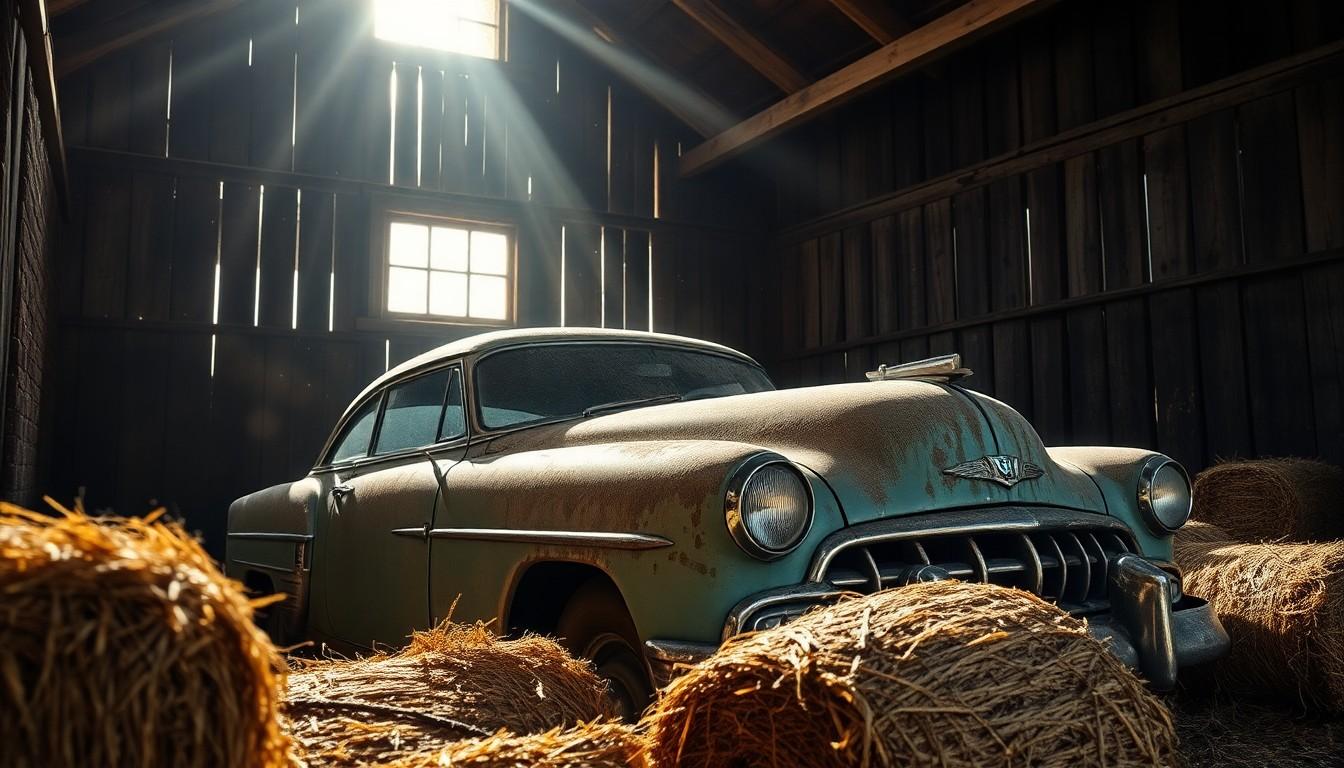Have you ever wondered about those incredible stories of classic cars discovered hidden away in old barns? These “barn finds” represent some of the most exciting treasures in the automotive industry, often revealing vehicles that have been untouched for decades—sometimes worth small fortunes.
We’ve been fascinated by barn finds for years, and the reasons behind these automotive time capsules are as intriguing as the discoveries themselves. From farmers storing vehicles they intended to fix “someday” to collectors hiding prized possessions from taxation or theft, these forgotten classics tell unique stories of America’s automotive heritage that we can’t wait to share with you.
The Phenomenon of Barn Find Cars
Barn find cars represent a unique intersection of automotive history and treasure hunting that’s captured the imagination of car enthusiasts worldwide. These forgotten vehicles, tucked away in rural structures across America, often emerge after decades of hibernation to tell their silent stories. The discovery of a genuine barn find typically involves uncovering a vehicle that’s been stored long-term in an agricultural building, covered in dust and surrounded by the patina of time.
Classic car experts frequently note that genuine barn finds share certain characteristics: they’re typically stored in dry environments that prevent complete deterioration, they’re often covered or partially protected, and they’ve remained undisturbed for extended periods. The appeal of these automotive time capsules lies partly in their untouched nature – many still retain original parts, factory paint, and period-correct details that have disappeared from restored examples.
The mystique surrounding barn finds has grown substantially in recent years, fueled by television shows, auction coverage, and social media shares of spectacular discoveries. Major auction houses report that cars with documented barn find status often command premium prices compared to similar restored vehicles, with buyers valuing their authenticity and unique history. Remarkable examples include a Ferrari 275 GTB found in a North Carolina garage that sold for $2.5 million and a collection of 60 cars discovered in a French barn that fetched over $28 million at auction.
Historical Context: How Cars End Up in Barns
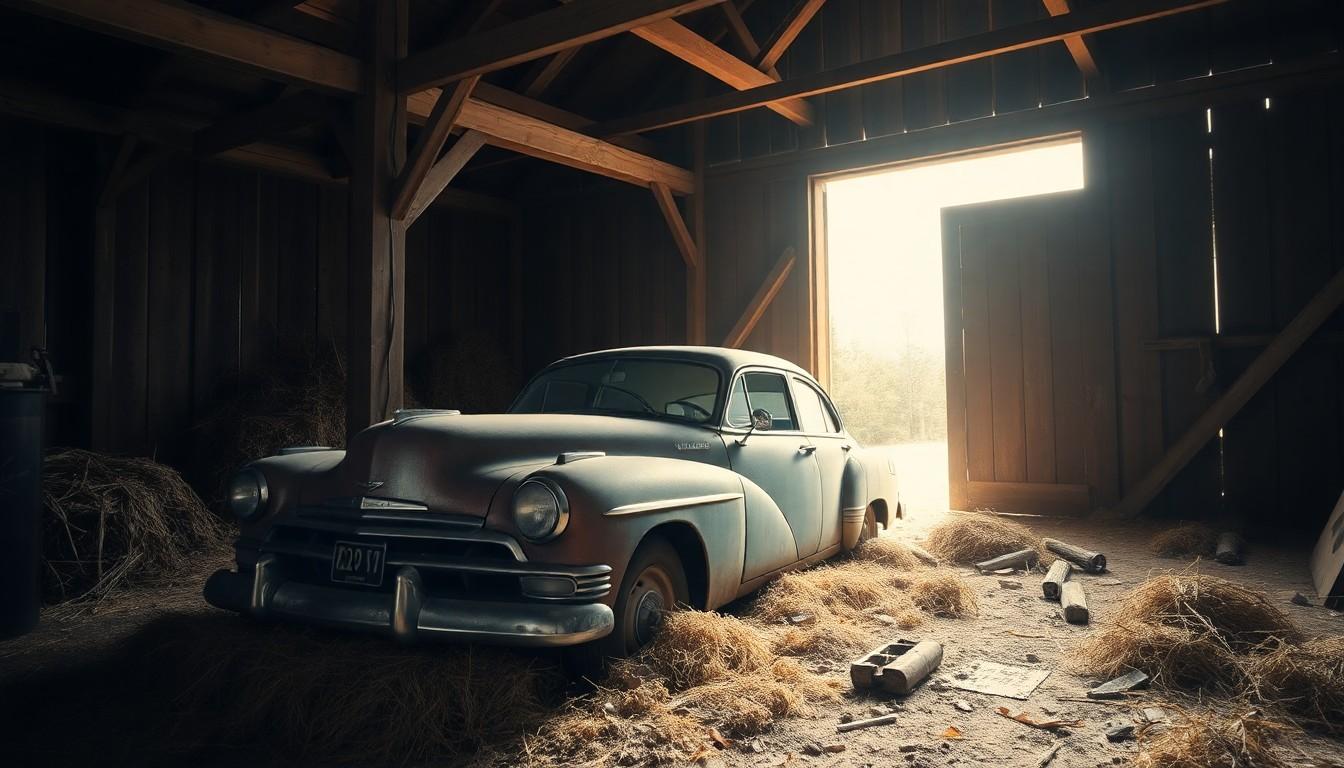
Classic vehicles find their way into barns through various historical and personal circumstances, creating the fascinating phenomenon of barn finds. These forgotten automotive treasures tell unique stories of abandonment, preservation, and the passage of time.
Abandonment and Neglect
Abandonment represents one of the most common reasons vintage cars end up in barns. Many classic vehicles were simply left in agricultural outbuildings after their owners lost interest, relocated, or passed away. These automobiles often sit forgotten for decades, gradually becoming coated in dust and protected from the elements by their humble barn homes. During periods of hardship such as Industry War II, car owners deliberately stored their vehicles to shield them from wartime shortages and rationing. Personal circumstances like illness or financial difficulties frequently led to cars being temporarily stored with intentions of future restoration that never materialized.
Economic Factors and Market Conditions
Market fluctuations directly influence why many collectible cars end up stored in barns. When a vehicle’s value drops dramatically, owners often choose to store it rather than sell at a financial loss, anticipating future market recovery. The prohibitive cost of restoration presents another economic factor, as repair expenses frequently exceed a car’s current market value, making storage the more financially prudent option. Changing automotive trends and evolving personal interests contribute significantly to barn storage decisions, particularly for vehicles that once enjoyed popularity but later fell out of favor with collectors and enthusiasts.
Family Heirlooms and Inheritance
Inheritance patterns create many classic barn finds across rural America. Cars passed down through generations sometimes land with new owners who lack the same passion or resources to maintain these vehicles properly. Even though their deteriorating condition, family members often keep inherited cars stored away due to their strong sentimental associations rather than practical value. Emotional attachments to vehicles once driven by parents, grandparents, or other beloved relatives prevent many potentially valuable classics from being sold or restored, instead remaining tucked away in barns as physical connections to family history and memories.
Rural Storage and Protection From the Elements
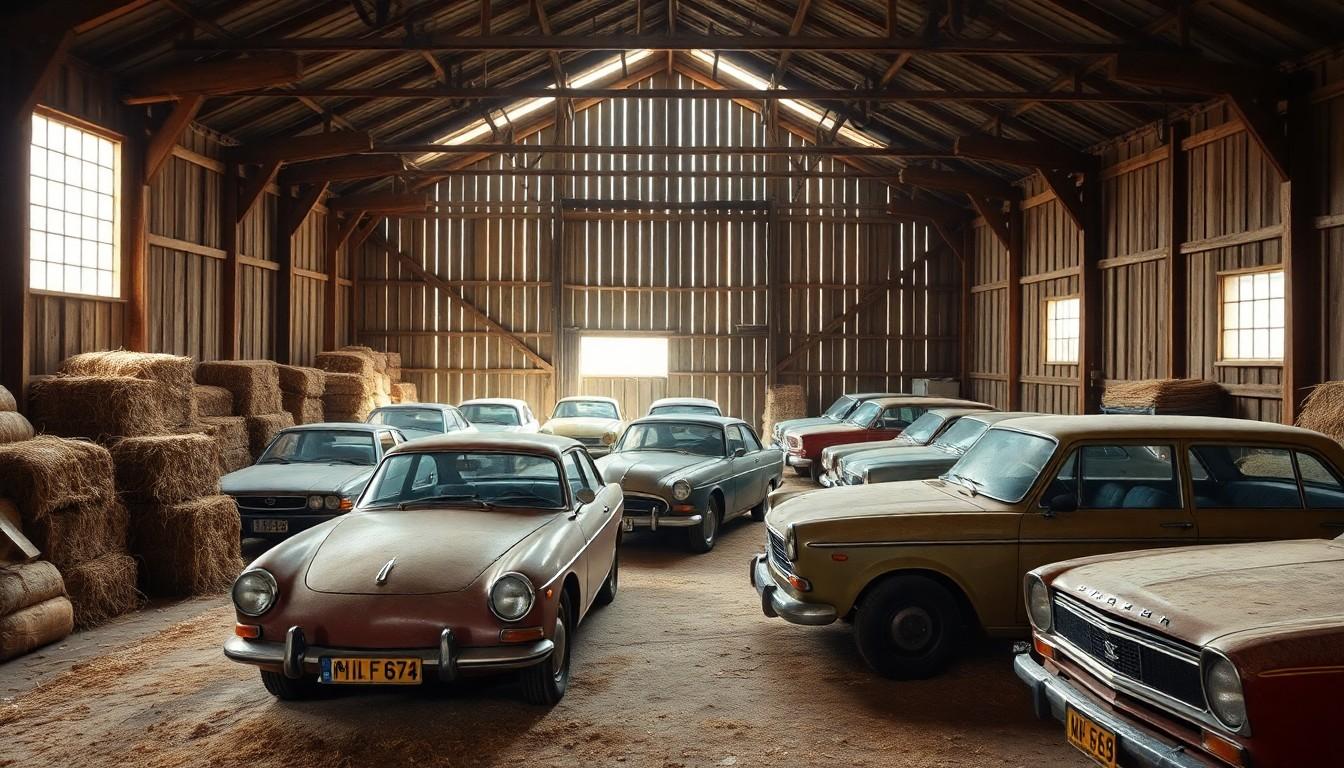
Barns serve as ideal, unintentional preservation chambers for classic automobiles, offering unique conditions that help maintain vehicles over extended periods. These agricultural structures provide several advantages that explain why so many valuable classic cars remain hidden away in rural settings for decades.
The Natural Preservation Qualities of Barns
Barns create nearly perfect environmental conditions for long-term vehicle storage. Straw bales commonly found in barns naturally absorb moisture from the air, creating a low-humidity environment that significantly reduces rust formation on metal components. These structures shield cars from direct exposure to harsh weather elements including rain, snow, and ultraviolet radiation that typically accelerate deterioration. Many barns maintain relatively stable temperatures throughout seasonal changes, preventing the expansion and contraction cycles that damage materials like rubber, vinyl, and leather interior components. The wooden construction of traditional barns also allows for subtle air circulation, preventing the stagnant moisture that leads to mold growth inside vehicles. This combination of environmental factors explains why cars discovered in barns often retain much of their original integrity even though decades of neglect—the barn itself acts as a passive preservation system that protects the vehicle’s materials from common degradation factors.
ChatGPT: ## Rural Storage and Protection From the Elements
Barns serve as ideal, unintentional preservation chambers for classic automobiles, offering unique conditions that help maintain vehicles over extended periods. These agricultural structures provide several advantages that explain why so many valuable classic cars remain hidden away in rural settings for decades.
The Natural Preservation Qualities of Barns
Barns create nearly perfect environmental conditions for long-term vehicle storage. Straw bales commonly found in barns naturally absorb moisture from the air, creating a low-humidity environment that significantly reduces rust formation on metal components. These structures shield cars from direct exposure to harsh weather elements including rain, snow, and ultraviolet radiation that typically accelerate deterioration. Many barns maintain relatively stable temperatures throughout seasonal changes, preventing the expansion and contraction cycles that damage materials like rubber, vinyl, and leather interior components. The wooden construction of traditional barns also allows for subtle air circulation, preventing the stagnant moisture that leads to mold growth inside vehicles. This combination of environmental factors explains why cars discovered in barns often retain much of their original integrity even though decades of neglect—the barn itself acts as a passive preservation system that protects the vehicle’s materials from common degradation factors.
What Makes Barn Find Cars So Valuable
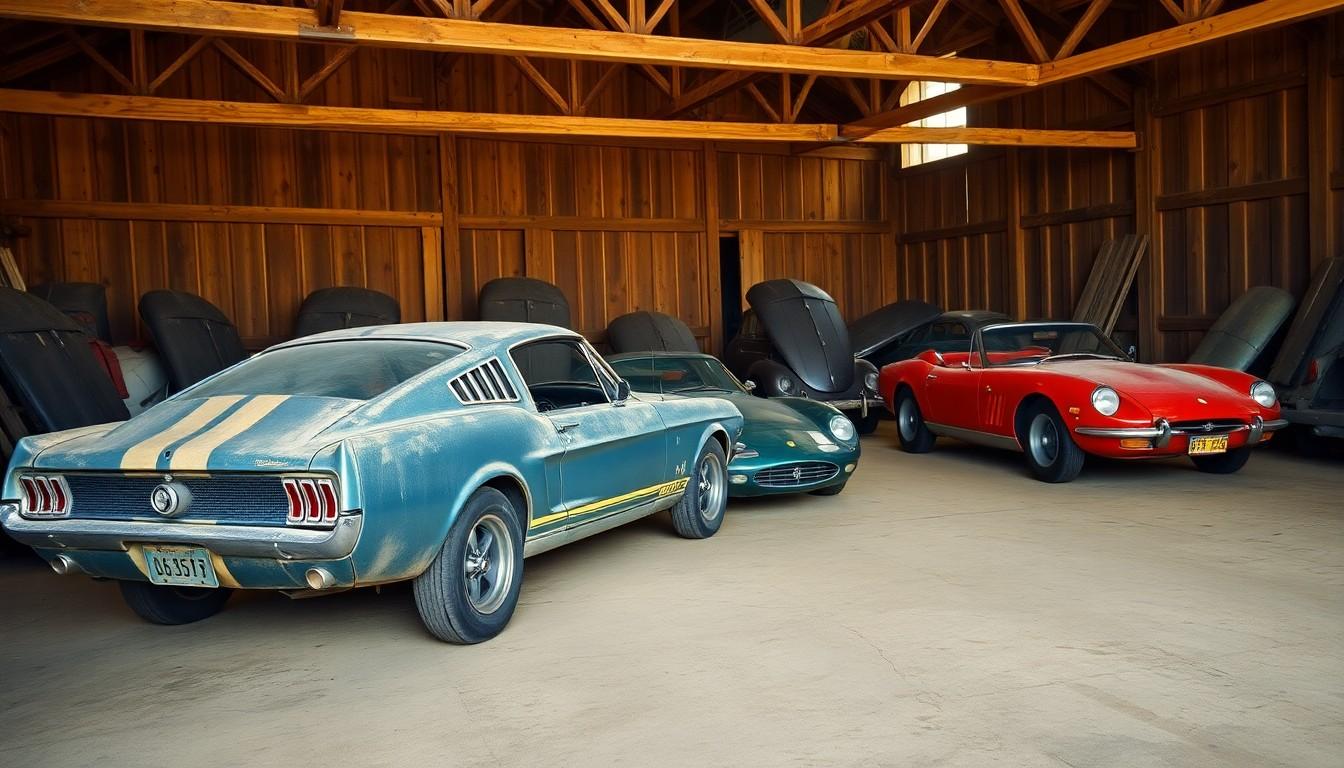
Barn find cars command extraordinary prices in today’s market due to their unique characteristics and stories. These automotive time capsules often sell for significantly more than their restored counterparts, with collectors willing to pay premium prices for vehicles with authentic histories.
Originality and Time Capsule Effect
Original barn find cars preserve automotive history in its purest form, creating a genuine time capsule effect that can’t be replicated. Current collector trends favor treating these vehicles sympathetically rather than performing full restorations that might erase evidence of their unique past. Original features, even those showing important wear or deterioration, add tremendous value because they maintain the car’s authenticity and tell its unique story. The patina—that distinctive weathering pattern formed over decades—serves as physical documentation of the vehicle’s journey and can actually increase its market worth. For example, a 1965 Shelby Mustang with its original patina sold for $385,000, fetching more than comparable fully restored examples.
Rarity and Historical Significance
Barn find vehicles often represent some of the rarest automotive specimens, making their discovery particularly exciting for collectors and historians. Many barn discoveries reveal cars produced in limited quantities or featuring unique specifications that contribute substantially to their value regardless of condition. Historical context plays a crucial role in valuation, with vehicles connected to important eras or events commanding higher prices at auction. The historical interest extends beyond just the vehicle itself to include its storage story and ownership chain. A compelling example is a 1967 Ferrari 330 GTS spider that, even though suffering engine fire damage, sold for $2.1 million primarily due to its extreme rarity and historical importance. Collectors value these cars as authentic artifacts representing automotive development through the decades, with each dent and scratch adding to rather than detracting from their appeal.
Famous Barn Find Discoveries
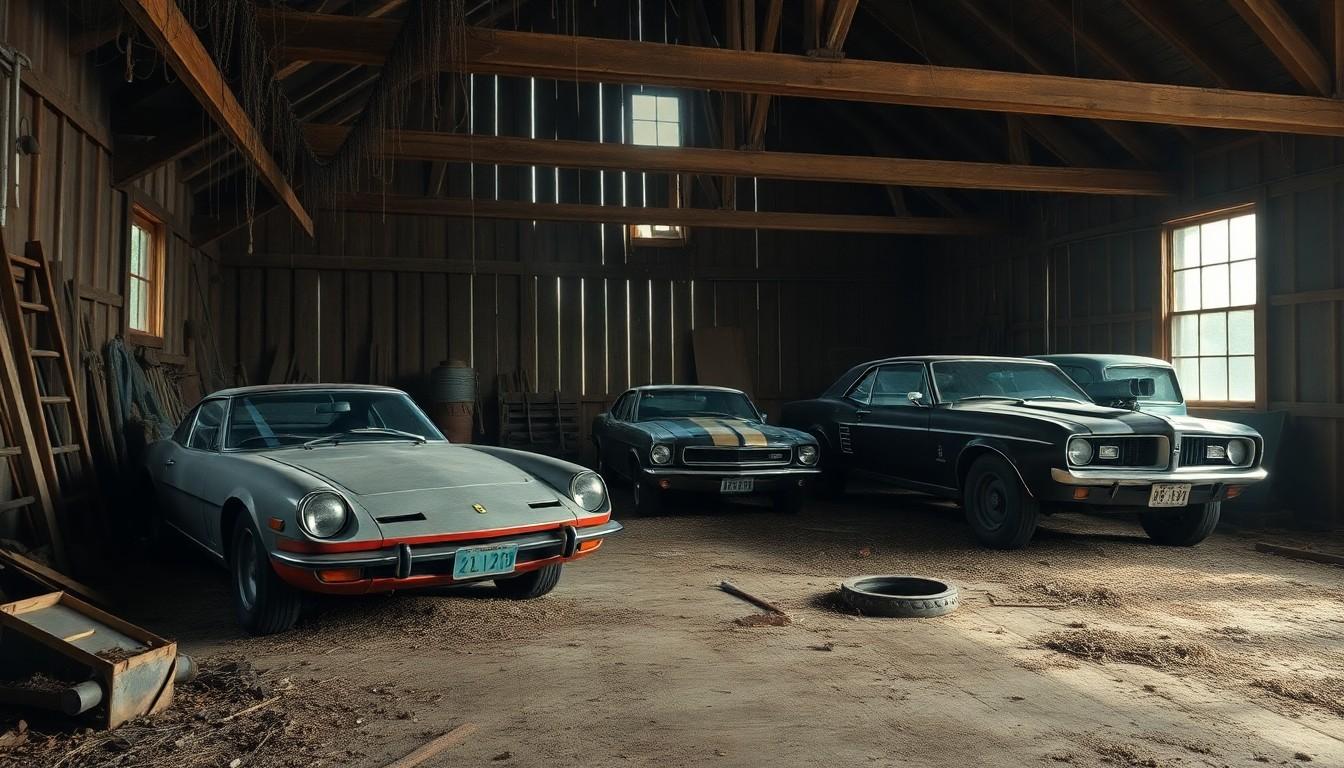
The automotive industry has been repeatedly stunned by incredible barn find discoveries that capture the imagination of collectors and enthusiasts alike. These forgotten treasures emerge from decades of slumber to tell their unique stories and often command extraordinary prices at auction.
Legendary Vehicles Unearthed
Several remarkable barn finds have become legendary in automotive circles due to their rarity and historical significance. The 1967 Ferrari 330 GTS Spider stands as one of the most famous examples, discovered after spending 44 years hidden away following an engine fire in 1969. Rare Shelby Cobra 427s have emerged from obscurity, instantly becoming the centerpiece of any collection they join. The elusive Ferrari 250 GTO represents perhaps the ultimate barn find fantasy for collectors, with examples counted among the most valuable automobiles ever produced. Classic British luxury masterpieces like the Aston Martin DB4 have been rescued from decades of neglect, providing tangible connections to automotive history. Muscle car enthusiasts have celebrated the rediscovery of icons like the Ford Mustang Boss 429, vehicles that embody America’s golden age of performance automobiles.
Million-Dollar Discoveries
Barn finds regularly achieve staggering prices at auction even though their deteriorated condition. The previously mentioned 1967 Ferrari 330 GTS Spider sold for an astonishing $2.1 million in 2014, demonstrating how collectors value originality over perfection. These vehicles attract premium bids because they offer something money typically can’t buy – unrepeatable originality and authenticity that even the most meticulous restorations can’t replicate. Collectors treasure these automotive time capsules for their historical integrity and the opportunity they present: a chance to preserve or restore a piece of automotive history according to the new owner’s vision without compromising its fundamental character. Their deteriorated state often tells a more compelling story than pristine examples, creating a tangible connection to the past that resonates deeply with enthusiasts and investors alike.
The Legal Aspects of Barn Find Ownership
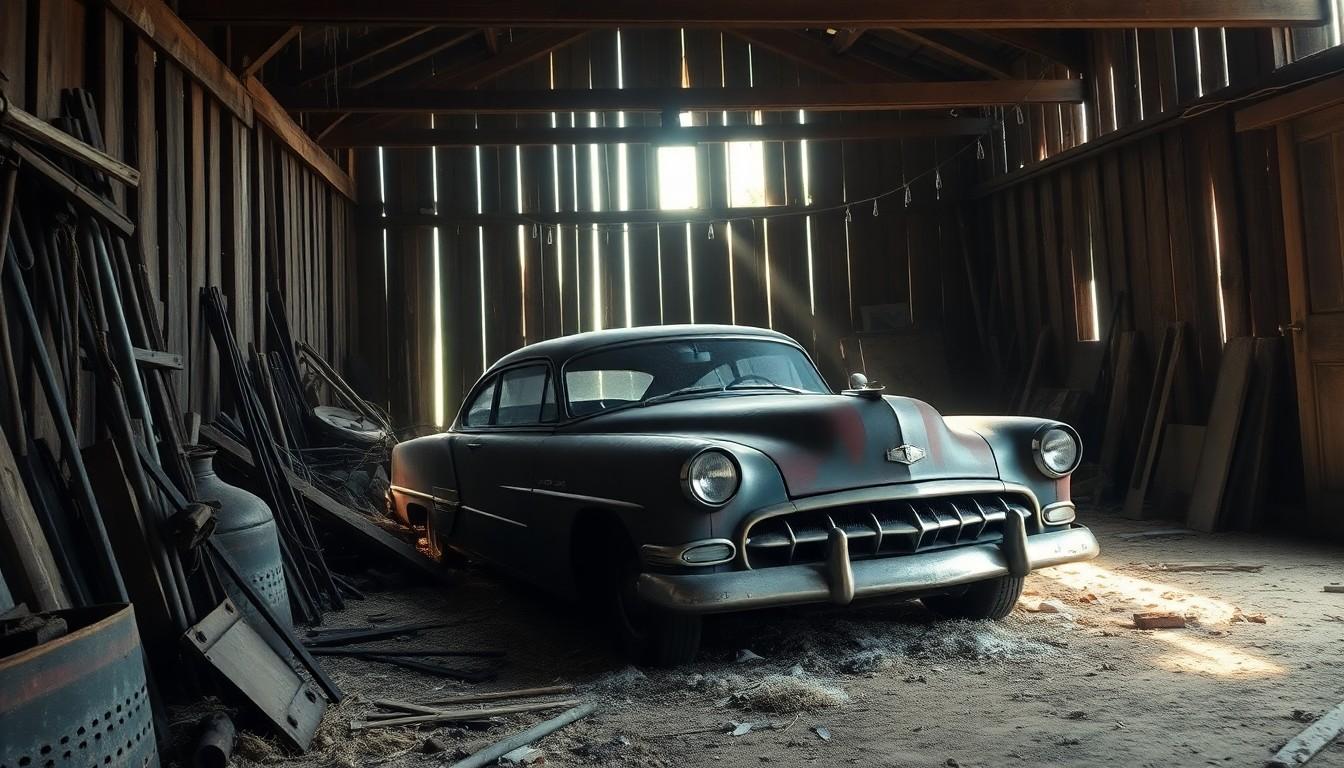
Handling the legal industry of barn find ownership presents several challenges for collectors and enthusiasts. Title and ownership documentation form the foundation of legal possession, with clear titles in the current owner’s name generally preventing disputes. Missing or lost titles create important complications that can jeopardize your ability to register, restore, or sell the vehicle.
Abandonment laws vary by jurisdiction and directly impact property owners’ rights to vehicles left on their land. Most states establish exact timeframes—typically ranging from 3-7 years—after which abandoned vehicles may be claimed through legal processes. These processes often include submitting documentation to the DMV, paying required fees, and following state-mandated procedures for obtaining a new title.
Inheritance considerations frequently arise with barn finds since many vehicles become discovered during estate settlements. Cars passed down through generations follow standard inheritance laws, with ownership transferring according to the deceased’s will or state intestacy statutes. Executors of estates must properly account for these vehicles when cataloging assets, even if they’ve been forgotten in outbuildings for decades.
Restoration and sale requirements demand careful attention to legal compliance. Before selling a barn find, you’ll need comprehensive documentation proving ownership, potentially including bills of sale, affidavits from previous owners, or court-ordered titles. Sales across state lines involve additional regulatory requirements, and failure to address these legal aspects can result in future title problems for subsequent owners.
Tax implications also deserve consideration when acquiring or selling important barn finds. Vehicles sold at substantial profits may trigger capital gains taxes, while inherited vehicles receive stepped-up basis values that can reduce future tax burdens. Consulting with tax professionals experienced in collectible assets ensures proper compliance with federal and state tax laws.
The Future of Barn Finds in the Digital Age
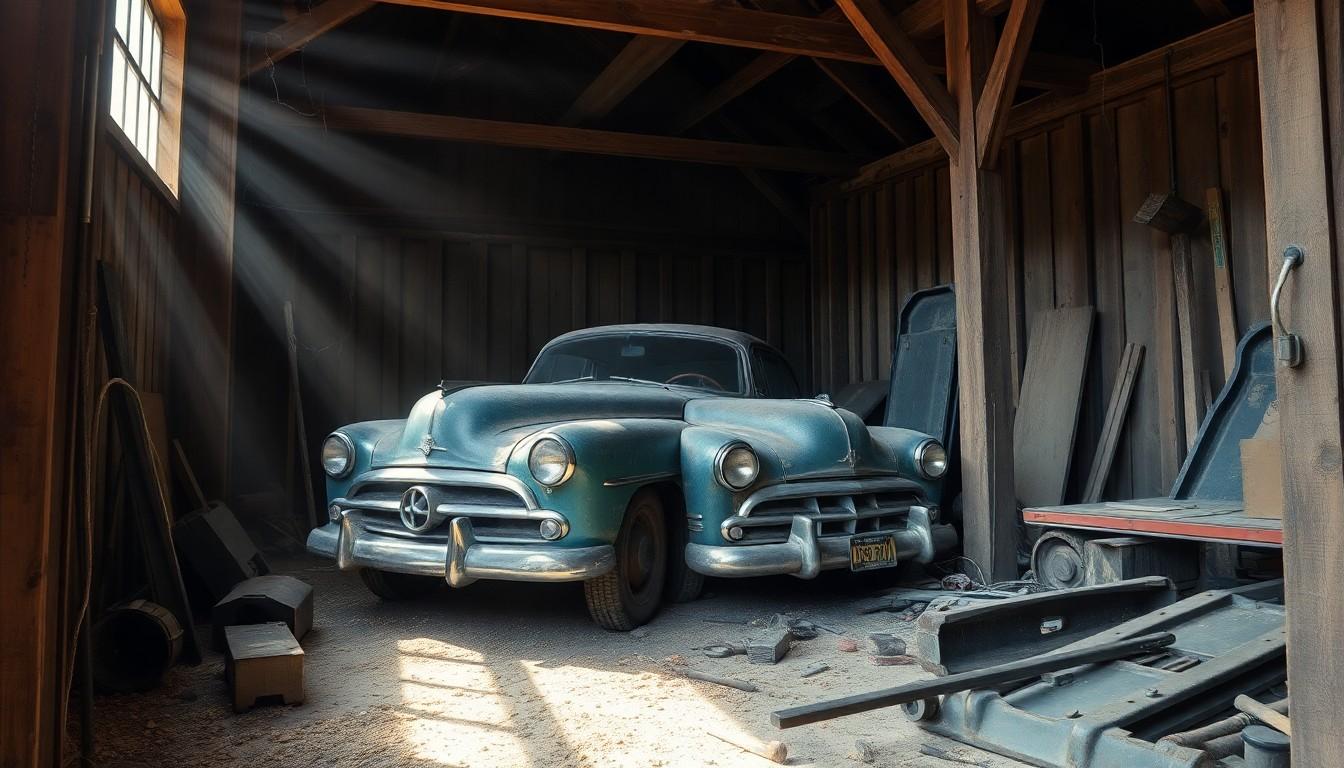
The supply of barn finds remains inherently limited due to the finite number of classic collector cars ever manufactured. This scarcity directly contributes to their important value and the excitement surrounding their discovery. Classic vehicles’ limited production numbers ensure that genuine barn finds will become increasingly rare treasures as time progresses.
Social media platforms, specialized websites, and online forums have revolutionized how barn finds are discovered and documented. These digital channels spread information about newly unearthed vehicles at unprecedented speeds, connecting collectors with possibilities they might never have encountered otherwise. A wider audience of enthusiasts can now participate in the excitement of barn find culture, driving interest and potentially increasing market values for these historic automobiles.
Online communities provide invaluable resources for barn find restoration and customization projects. Digital platforms connect owners with experienced restorers, rare parts suppliers, and fellow enthusiasts who share technical knowledge and preservation techniques. This collaborative environment makes the restoration process more accessible to newcomers while helping preserve authentic restoration methods for historically important vehicles.
Market dynamics for barn finds continue to evolve with dramatic price variations based on several key factors:
| Factor | Impact on Valuation |
|---|---|
| Rarity | Extremely rare models can command prices 10-20× higher than common variants |
| Condition | Original untouched condition often valued higher than poorly restored examples |
| Historical Significance | Provenance and documented history can double or triple baseline values |
| Completeness | Original components significantly increase value over cars with replacement parts |
The “just-discovered” mystique of barn finds maintains a powerful hold on collectors’ imaginations. This buried treasure narrative continues to captivate bidders at prestigious auctions worldwide, demonstrated by the $2.1 million sale of a 1967 Ferrari 330 GTS spider that had been stored for 44 years following an engine fire. Expert collectors increasingly value preservation over restoration, preferring vehicles that retain evidence of their unique histories rather than those restored to factory-new condition.
Conclusion
Barn find cars represent more than just forgotten vehicles – they’re time capsules of automotive history with stories as valuable as the metal they’re made from. These discoveries continue to fascinate us because they combine the thrill of treasure hunting with the nostalgia of America’s car culture.
As the digital age connects enthusiasts worldwide the mystique of barn finds remains powerful. The ideal preservation conditions of rural barns coupled with the legal complexities of ownership create a fascinating network where these automotive treasures can hibernate for decades.
We’ve seen how these discoveries can command extraordinary prices not for their pristine condition but for their authenticity and historical significance. The preservation-over-restoration trend signals our collective appreciation for vehicles that carry their history honestly whether covered in dust or showing the patina of time.
Frequently Asked Questions
What is a barn find car?
A barn find car is a classic or vintage automobile discovered after being stored and forgotten in a barn or similar structure for many years or decades. These vehicles are typically untouched, covered in dust, and remain in their original condition—creating a time capsule effect that makes them particularly valuable to collectors and automotive enthusiasts.
Why are barn finds so valuable?
Barn finds command premium prices because they represent automotive history in its purest form. Their originality, patina, and untouched condition create a genuine time capsule effect that cannot be replicated. Collectors value their authenticity, historical significance, and the unique stories they tell. Many barn finds are also rare models, further increasing their appeal and market value.
What conditions make barns ideal for preserving classic cars?
Barns provide surprisingly good preservation environments because their wooden structures absorb moisture, creating low-humidity conditions that reduce rust. They shield vehicles from harsh weather while maintaining relatively stable temperatures. The natural air circulation prevents mold growth, while limited exposure to sunlight protects interiors. These factors explain why many barn finds remain remarkably intact despite decades of neglect.
What are some notable barn find discoveries?
Famous barn finds include a 1967 Ferrari 330 GTS Spider that sold for $2.1 million after being hidden for 44 years, a Ferrari 275 GTB that fetched $2.5 million, and a collection of 60 cars from a French barn that realized over $28 million at auction. Rare Shelby Cobras and Mustangs have also emerged from long-term storage, capturing headlines and setting auction records.
How do cars typically end up forgotten in barns?
Cars end up abandoned in barns for various reasons: owners intend to repair them “someday” but never do; economic downturns lead people to store rather than sell at a loss; family members inherit vehicles but lack interest in restoration; automotive trends change, making once-popular cars less desirable; or owners relocate or pass away, leaving vehicles behind. These circumstances create the perfect conditions for cars to be forgotten for decades.
What legal issues might arise with barn find cars?
Legal challenges with barn finds often involve title and ownership documentation. Abandonment laws vary by state and impact who has rights to vehicles left on private property. Proper inheritance documentation is crucial when barn finds are discovered during estate settlements. Buyers should ensure comprehensive title work to avoid future ownership disputes. Tax implications also exist when acquiring or selling barn finds.
Is the “barn find” market changing in the digital age?
Yes, the barn find market is evolving rapidly. Social media and online platforms have transformed how these vehicles are discovered and shared. While genuine barn finds remain limited due to the finite number of classic cars manufactured, the mystique of newly-discovered, original-condition vehicles continues to captivate collectors. The market increasingly values preservation over restoration, with untouched vehicles commanding significant premiums.
Should barn find cars be restored or preserved?
This depends on the vehicle’s condition and significance. The current collector trend favors preservation over restoration when possible, as original features—even those showing wear—add tremendous value and maintain authenticity. Many collectors now choose sympathetic conservation approaches that stabilize the vehicle while preserving its unique patina and history. For severely deteriorated vehicles, careful restoration may be necessary.

